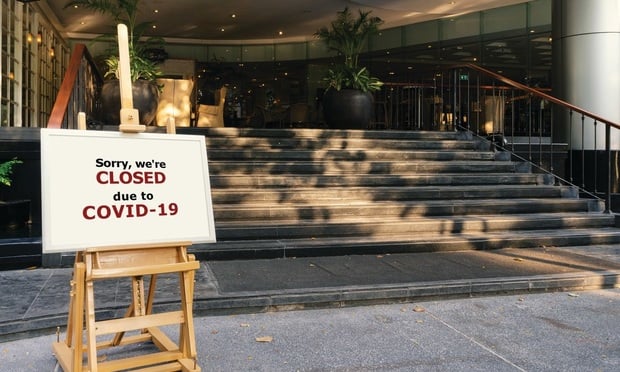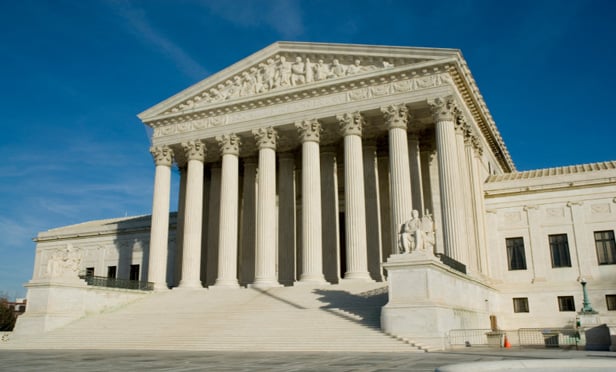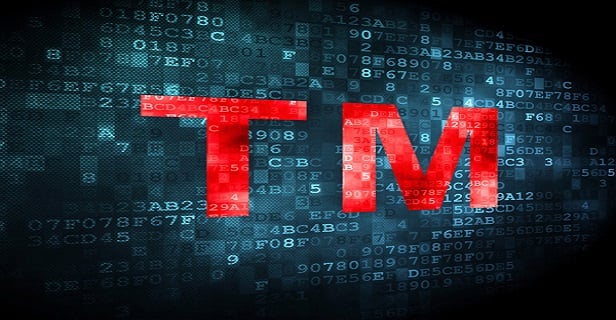Columns & Departments

Bit Parts
Nashville Federal Court Decides Spotify CEO Daniel Ek Must Sit for Deposition in Copyright Licensing Dispute Over Streaming of Eminem Songs
Features

When Do COVID-19 Shutdown Orders Excuse Lease Guarantors?
Section 22-1005 of the New York City Administrative Code provides relief for individuals who guaranteed commercial leases when the tenant defaulted as a result of government orders issued during the early days of the COVID-19 pandemic. In recent months, however, litigation has emerged about the scope of that relief.
Columns & Departments

Landlord & Tenant Law
Questions of Fact Remain About Whether Landlord Had Released Corporate Tenant from Liability Yellowstone Injunction Does Not Require Proof of Likelihood of Success Guaranty Expired With Tenant's Initial Lease Term Illegal Use Does Not Preclude Rent Stabilization Status Guarantor Immunity Does Not Apply to Pre-COVID Breaches Class Certification Appropriate for Claim of Improper Deregulation
Columns & Departments

Co-ops and Condominiums
Statements By Condo Board Members Cloaked In Common Interest Privilege Shareholder Entitled to Maintenance Abatement for Breach of Warranty of Habitability
Columns & Departments

Real Property Law
Deference to Trial Court's Determination on Mortgage Priority No Broker Commission for Sale After Expiration of Tail Period Co-Owner Who Did Not Execute Mortgage Not Subject to Equitable Lien By Mortgagee Insufficient Evidence of Delay to Support Laches Defense Against Claim to Set Aside Deed As a Forgery Statements Did Not Defeat Hostility In Adverse Possession Claim
Features

UPDATE: Did the Supreme Court's 'Arthrex' Decision Open Pandora's Box?
In June 2021, the Supreme Court ruled in U.S. v. Arthrex that the statutory scheme appointing Patent Trial and Appeal Board administrative patent judges to adjudicate IPRs violates the appointments clause of the U.S. Constitution. Specifically, the Court concluded that because APJ decisions in IPR proceedings are not reviewable by a presidentially appointed and Senate-confirmed officer, such determinations are not compatible with the powers of inferior officers. The PTO later decided that it would not accept requests for director review of institution decisions. This policy is now also being questioned in Arthrex's wake.
Features

Proper Notice of Trademark Rights: Using Trademark Symbols for Three-Dimensional Packaging and Product Designs
Among the most common questions trademark attorneys are asked is what the differences are between the symbols ®, TM, and SM. When should such symbols should be used? Where should they appear? How frequently? Do they even need to be used at all?
Features

What's Happening With Productions Tax Credit In GA?
In recent years, the Peach State has become one of the most popular spots for film companies. However, the state General Assembly's action with regarding one bill and inaction with regard to another have threatened to harm the entertainment industry.
Features

State Law Requiring Offer to License Conflicts With Copyright Act
A federal judge has sided with the Association of American Publishers (AAP), finding in June that a recently enacted Maryland library e-book law conflicts with federal copyright laws.
Features

2d Cir. Arguments In Judge Moore's Defamation Case Against Baron Cohen
Attorneys for former Alabama U.S. Senate candidate Roy Moore and the comedian Sacha Baron Cohen appeared before the U.S. Court of Appeals for the Second Circuit in June, with Moore's attorney Larry Klayman urging the three-judge panel to reverse the district court ruling dismissing a lawsuit Moore filed.
Need Help?
- Prefer an IP authenticated environment? Request a transition or call 800-756-8993.
- Need other assistance? email Customer Service or call 1-877-256-2472.
MOST POPULAR STORIES
- The 'Sophisticated Insured' DefenseA majority of courts consider the <i>contra proferentem</i> doctrine to be a pillar of insurance law. The doctrine requires ambiguous terms in an insurance policy to be construed against the insurer and in favor of coverage for the insured. A prominent rationale behind the doctrine is that insurance policies are usually standard-form contracts drafted entirely by insurers.Read More ›
- The Brave New World of Cybersecurity Due Diligence in Mergers and Acquisitions: Pitfalls and OpportunitiesLike poorly-behaved school children, new technologies and intellectual property (IP) are increasingly disrupting the M&A establishment. Cybersecurity has become the latest disruptive newcomer to the M&A party.Read More ›
- A Lawyer's System for Active ReadingActive reading comprises many daily tasks lawyers engage in, including highlighting, annotating, note taking, comparing and searching texts. It demands more than flipping or turning pages.Read More ›
- Abandoned and Unused Cables: A Hidden Liability Under the 2002 National Electric CodeIn an effort to minimize the release of toxic gasses from cables in the event of fire, the 2002 version of the National Electric Code ("NEC"), promulgated by the National Fire Protection Association, sets forth new guidelines requiring that abandoned cables must be removed from buildings unless they are located in metal raceways or tagged "For Future Use." While the NEC is not, in itself, binding law, most jurisdictions in the United States adopt the NEC by reference in their state or local building and fire codes. Thus, noncompliance with the recent NEC guidelines will likely mean that a building is in violation of a building or fire code. If so, the building owner may also be in breach of agreements with tenants and lenders and may be jeopardizing its fire insurance coverage. Even in jurisdictions where the 2002 NEC has not been adopted, it may be argued that the guidelines represent the standard of reasonable care and could result in tort liability for the landlord if toxic gasses from abandoned cables are emitted in a fire. With these potential liabilities in mind, this article discusses: 1) how to address the abandoned wires and cables currently located within the risers, ceilings and other areas of properties, and 2) additional considerations in the placement and removal of telecommunications cables going forward.Read More ›
- The New York Uniform Commercial Code Comes of AgeParties in large non-consumer transactions with no connection whatsoever to New York often choose its law to govern their transactions, and New York statutes permit them to do so. What most people do not know is that the New York Uniform Commercial Code is outdated.Read More ›
